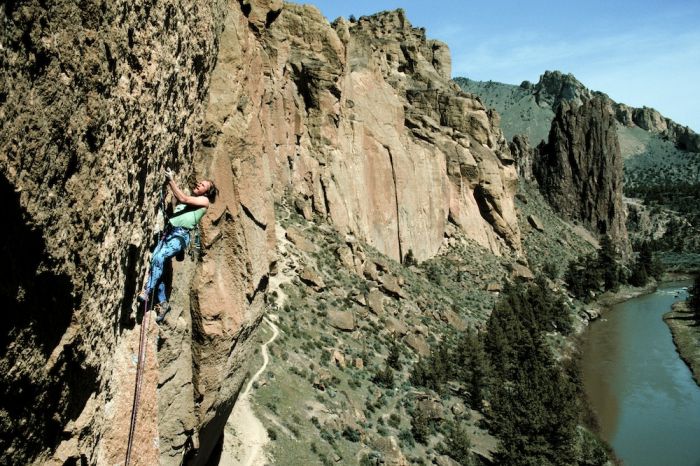How to Use Climbing Pitons

Climbers and rescue workers make use of climbing pitons in difficult situations where one is required to climb up a nearly vertical surface. The basic aim of pitons is to provide a secure hold for the climbing equipment. Even though controversies have risen lately on the use of pitons because of their destructiveness, you may have to use them indefinitely. However, it is imperative that you learn the right way to use pitons in order to ensure personal safety.
Things Required:
– Piton
– Hammer
– Eye Protection
Instructions
-
1
Examine the rock face you intend to climb. Cracks are what you will be looking for. Choose a path that has plenty of horizontal cracks. Moreover, the climbing task would become much easier if the cracks in your path narrow down at both ends. This will ensure that the piton fits properly in the crack.
-
2
Look out for loose or flaking areas because hollow spots would not be able to hold your piton in place. To check for flaking areas, lightly tap the surrounding rock and listen to the sound that is produced. Use a hammer for tapping the rocks.
-
3
When you insert the piton into a crack, it should fit at least half-way in without hammering. It is always good to have a variety of pitons at hand so that you can choose one that fits the best.
-
4
Slowly strike the piton with the hammer until the piton’s eye comes in contact with the rock. If you do not feel resistance while hammering the piton into the rock, there is a fair chance that it would not provide a strong enough hold for supporting the weight of your climbing equipment.
Similarly, make sure the piton goes all the way into the rock.
Find a different crack if that is not the case. Furthermore, ensure that the crack into which you are hammering the piton does not widen in any way. -
5
Ensure that the piton holds firmly and does not move in any way. Tap the sides of the piton with a hammer for this purpose.
-
6
Once you are positive that the piton you just hammered into a crack would hold firm, clip your equipment into the eye of the piton. As a precautionary measure, pull on the climbing equipment and make sure that the piton does not come loose.
-
7
For removing a piton, hammer it at its side until it loosens.







